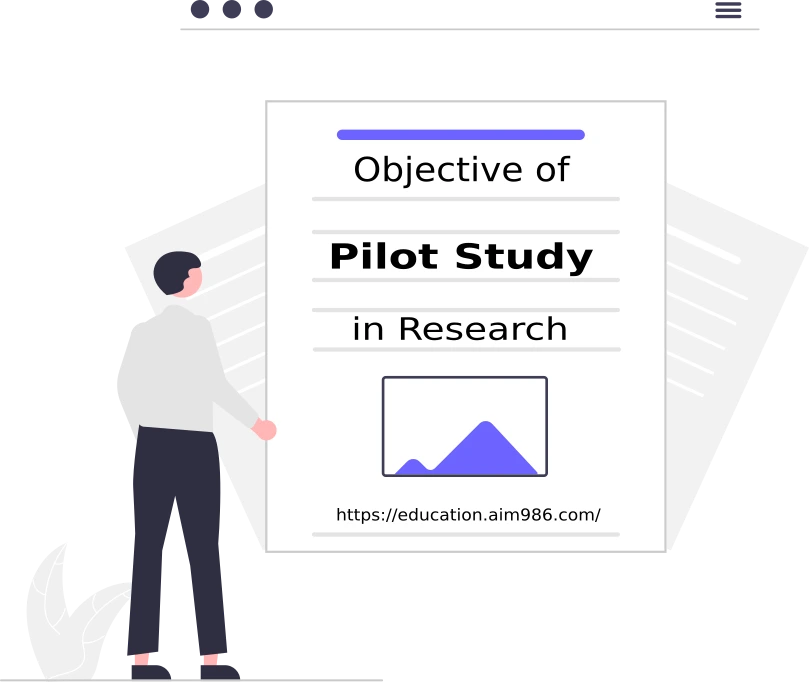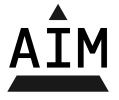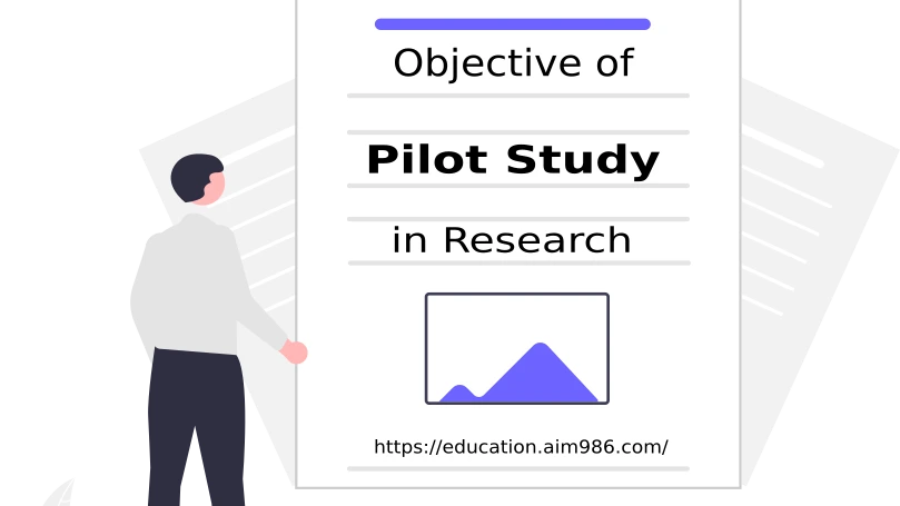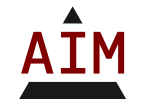
A pilot study, also known as a feasibility study, is a small-scale, preliminary research project that is conducted prior to launching a full-scale investigation. The primary aim of a pilot study in research is to test the feasibility of the proposed study design and methodology, assess the potential difficulties or problems that may arise, and to make necessary modifications to the study design and methodology before implementing the full-scale study. A pilot study can provide valuable information about the study population, sample size, data collection instruments, and the overall feasibility of conducting the research project, allowing the researcher to make informed decisions and increase the chances of success of the full-scale study.
What is Pilot Study in research?
A Pilot-Study, also known as a feasibility study, is a small-scale, preliminary research project that is conducted prior to launching a full-scale investigation. The primary aim of a pilot-study in research is to test the feasibility of the proposed study design and methodology, assess the potential difficulties or problems that may arise, and to make necessary modifications to the study design and methodology before implementing the full-scale study. A pilot-study can provide valuable information about the study population, sample size, data collection instruments, and the overall feasibility of conducting the research project, allowing the researcher to make informed decisions and increase the chances of success of the full-scale study.
A Pilot-Study can also help to establish the reliability and validity of the measurement tools, determine the appropriate sample size for the full-scale study, and provide an estimate of the required resources, including time, personnel, and funding. The results of a pilot-study can also inform the development of the research question, study design, and data analysis plan for the full-scale study. In some cases, a pilot-study can even lead to new insights and discoveries, allowing the researcher to modify the research question and study design accordingly.
It is important to note that it is not a miniaturized version of the full-scale study, but rather a separate, standalone research project with its own objectives and specific study design. The results of a pilot-study are not typically representative of the results of the full-scale study, but rather provide information that can be used to make informed decisions about the full-scale study.
In summary, a pilot-study is an important step in the research process that can help ensure the success of a full-scale study by identifying potential problems, refining the study design and methodology, and providing valuable information for planning the full-scale study.
Pilot Study Objectives in Research
A pilot-study is conducted in research to achieve several objectives, including:
- Testing the feasibility of the research: A pilot-study helps to determine if the research is practical, realistic, and appropriate for the study.
- Establishing reliability and validity of the data collection instruments: The pilot-study helps to determine if the survey questionnaire, interview guide, or any other data collection instrument is clear, concise and suitable for the study.
- Refining the research methodology: Based on the results of the pilot-study, researchers can make necessary modifications to their research design, methods, and tools.
- Estimating sample size: It can help to determine the appropriate sample size for the full study, avoiding problems of under-or over-sampling.
- Evaluating the time frame for data collection and analysis: It helps to determine how long it will take to collect data and how much time will be needed for data analysis.
- Training and familiarizing research staff: A pilot-study is an opportunity for research staff to become familiar with the research process, and to receive training on how to conduct data collection and analysis. This can improve the quality of data collected in the full study.
- Evaluating the response rate: It can help to evaluate the response rate and make necessary adjustments to improve the response rate in the full study.
- Improving ethical considerations: A pilot-study can help researchers to identify ethical considerations and make necessary adjustments to ensure ethical conduct in the full study.
- Determining the cost of the full study: The pilot-study can help to determine the cost of the full study and make necessary adjustments to minimize the cost.
- Building confidence in the research process: A successful pilot-study can build confidence in the research process and increase the likelihood of success in the full study.
Conducting a pilot-study is an important step in the research process and can help to increase the accuracy, reliability and validity of the findings in the full study.
In summary, the objective of conducting a pilot-study is to identify potential problems and make improvements before launching a full-scale study, ultimately increasing the likelihood of success.
Purpose of conducting a Pilot Study in Modern Research
A pilot-study serves several purposes in the research process:
- Feasibility: A pilot study helps to determine if a proposed study is feasible in terms of resources, time, and logistics. It helps to determine the feasibility of a study by testing the research methods and procedures. This is important because it can reveal any limitations or difficulties in the study design that may impact the validity of the results. For example, a pilot-study can show that a particular measurement tool is not appropriate for the study population, or that a certain research procedure is too time-consuming or logistically challenging.
- Instrument refinement: Based on the results of a pilot study, researchers can make modifications in the research instrument to improve the study’s overall effectiveness.
- Estimation of sample size: A pilot study helps to estimate the sample size required for the main study, allowing for the appropriate allocation of resources and variability needed for the full-scale study. By analyzing the data collected during the pilot-study, researchers can determine if they need to adjust the sample size or methods to ensure the results are representative and accurate.
- Validation of measures: A pilot study helps to validate the measures used in the study, such as questionnaires or instruments, ensuring they are reliable and valid. A pilot study can test the intervention or treatment to be used in the full-scale study. This allows researchers to determine the acceptability, safety, and effectiveness of the intervention, and make any necessary modifications before conducting the full study.
- Data quality: A pilot study helps to identify potential sources of bias or measurement error, allowing researchers to make necessary changes to improve data quality.
- Cost-effective: Conducting a pilot study can help to identify and resolve any issues before they affect the main study, reducing the risk of errors or oversights that could be costly to correct. A pilot study can also help to optimize the study design, reducing the cost of the main study.
A pilot study is conducted to test and evaluate the feasibility, efficiency, and effectiveness of a proposed research design or intervention in a smaller and controlled environment before implementing it on a larger scale. The purpose of a pilot-study is to identify any potential problems, make necessary modifications, and improve the overall design of the study before launching a full-scale research project.
A pilot-study serves as an important trial run for a research project, helping to identify and address potential problems, establish methodology, and ensure the success of the full-scale study.
Overall, a pilot study is a valuable tool for researchers to assess and improve their study before conducting the full-scale research.
The aforementioned benefits, a pilot study can also provide insight into the participants’ experiences and reactions. For example, researchers can use the pilot-study to assess the clarity of instructions, the length of time required to complete a task, and the level of difficulty of the study. By incorporating participant feedback and alpha coefficient, researchers can make further modifications to the study design to improve its overall quality. In summary, a pilot study is an important and often overlooked step in the research process. By conducting a pilot-study, researchers can assess the feasibility of their proposed study, refine the study design, estimate sample size, validate measures, improve data quality, and gain valuable insight into participants’ experiences and reactions.
Also see: Objectives of Educational Psychology
Steps of Pilot Study in Research
The steps involved in conducting a pilot-study in research typically include:
- Developing a research question and hypotheses: Researchers should first determine what they hope to achieve through the pilot-study, and develop a research questions and hypotheses that will help to answer this question.
- Selecting a sample: Researchers must choose a sample of participants that is representative of the population they hope to study. The sample size should be large enough to provide meaningful results, but small enough to allow for efficient and cost-effective data collection.
- Developing and testing the study protocol: Researchers should develop the study protocol, which includes the procedures and methods used to collect data. The protocol should be tested and refined during the pilot-study to ensure it is both feasible and effective.
- Administering the study: Researchers should administer the study, following the study protocol as closely as possible. During this phase, researchers should collect and record data, and make any necessary modifications to the study protocol. Prior to pilot study, researcher should instruct the respondents about code of ethics (approvals, and recruiting participants etc.), confidentiality of the data and withdrawal policy that they can withdraw this process any time.
- Analyzing the data: Researchers should analyze the data collected during the pilot study, and compare the results to their original hypotheses. This will help researchers determine if the study protocol is effective, and if the hypotheses are supported by the data.
- Refining the study design: Based on the results of the pilot study, researchers can make any necessary modifications to the study design. This might include modifying the study protocol, adjusting the sample size, or making changes to the measures or instruments used to collect data.
- Preparing for the main study: Once the pilot study is completed and required alpha coefficient is obtained, researchers should use the results to finalize the study design, and prepare for the main study.
By following these steps, researchers can ensure that their pilot-study is thorough, well-designed, and effective. This will help to ensure that the main study is successful, and that the results are accurate and meaningful.
Types of Pilot Study
There are several types of pilot studies, including:
- Feasibility pilot study: This type of pilot-study is designed to test the feasibility of the research design, methods, and tools. The focus is on determining if the study is practical and realistic to conduct.
- Methodological pilot study: This type of pilot study is designed to test the methods and tools used in the study, such as survey questionnaires, interview guides, or other data collection instruments. The focus is on determining if the methods and tools are appropriate for the study.
- Pilot randomized controlled trial (RCT): This type of pilot-study is a small-scale version of a full-scale randomized controlled trial (RCT). The focus is on testing the feasibility, reliability, and validity of the study design, methods, and tools in a real-world setting.
- Pilot observational study: This type of pilot study is a small-scale version of a full-scale observational study. The focus is on testing the feasibility, reliability, and validity of the study design, methods, and tools in a real-world setting.
- Pilot survey: This type of pilot study is a small-scale version of a full-scale survey. The focus is on testing the feasibility, reliability, and validity of the survey questionnaire, sampling procedures, and data collection methods.
- Pilot qualitative study: This type of pilot-study is a small-scale version of a full-scale qualitative study. The focus is on testing the feasibility, reliability, and validity of the qualitative data collection methods and tools, such as interview guides and focus group discussion guides.
- Pilot intervention study: This type of pilot study is a small-scale version of a full-scale intervention study. The focus is on testing the feasibility, acceptability, and effectiveness of the intervention in a real-world setting.
- Pilot longitudinal study: This type of pilot study is a small-scale version of a full-scale longitudinal study. The focus is on testing the feasibility, reliability, and validity of the study design, methods, and tools for collecting data over an extended period of time.
- Pilot mixed methods study: This type of pilot study is a small-scale version of a full-scale mixed methods study. The focus is on testing the feasibility, reliability, and validity of collecting and analyzing both qualitative and quantitative data in the same study.
- Pilot program evaluation: This type of pilot study is a small-scale version of a full-scale program evaluation. The focus is on testing the feasibility, reliability, and validity of the study design, methods, and tools for evaluating the effectiveness of a program or intervention.
In conclusion, the type of pilot-study selected will depend on the research question, the study design, and the type of data being collected. The objective is to identify potential problems and make necessary improvements before launching a full-scale study.
How to write Pilot Study in Research Proposal?
Here are some steps to follow when writing a pilot-study in a research proposal:
- Methodology: Describe the study design for the pilot study, including the sample size, data collection methods, and data analysis methods. Be specific about the tools and techniques you will use and why they are appropriate for the pilot study.
- Participants: Provide a brief description of the participants who will be involved in the pilot study, including eligibility criteria, sampling methods, and the estimated number of participants.
- Administration of instrument/Data collection: Detail the data collection process, including the schedule, procedures, and responsibilities of the research staff. Describe how the data will be collected, stored, and protected. Research ethics should be clearly mentioned to participants i.e. purpose of the study, importance of the study for future research, confidentiality, withdrawal policy etc.
- Data analysis: Explain how the data will be analyzed, including the statistical techniques that will be used and level of significance. Outline any limitations of the data analysis and how they will be addressed.
- Expected outcomes: Describe what you expect to achieve from the pilot study and how the outcomes will inform the full-scale study.
- Budget: Provide a detailed budget for the pilot study, including the costs of data collection, analysis, and any other expenses.
- Conclusion: Summarize the main points of the pilot study and why it is an important part of the proposed research. Emphasize how the pilot study will improve the overall quality of the full-scale study.
By following these steps, you can write a clear and concise pilot-study in your research proposal, demonstrating the importance and relevance of the pilot study to your research question and study design.
Examples of Pilot Study in Research Methodology
Few examples of pilot studies in research methodology:
- Educational research: In educational research, pilot studies are often conducted to test new teaching methods or materials. For example, a pilot study may be conducted to test an instrument, research tool, questionnaire etc. to a small group of participants to evaluate its effectiveness and to make any necessary modifications before implementing it in a larger scale.
- Medical research: In medical research, pilot studies are often conducted to test the feasibility and effectiveness of new treatments or interventions. For example, a pilot study may be conducted to test a new drug or device on a small group of patients, to evaluate its safety and efficacy, and to make any necessary modifications before conducting the full-scale study.
- Social science research: In social science research, pilot studies are often conducted to test new survey or questionnaire designs. For example, a pilot study may be conducted to test a new survey questionnaire on a small group of participants, to evaluate its reliability and validity, and to make any necessary modifications before conducting the full-scale study.
- Psychological research: In psychological research, pilot studies are often conducted to test new interventions or treatments. For example, a pilot study may be conducted to test a new therapy or counseling intervention on a small group of participants, to evaluate its effectiveness, and to make any necessary modifications before conducting the full-scale study.
- Marketing research: In marketing research, pilot studies are often conducted to test the effectiveness of new marketing strategies or tactics. For example, a pilot study may be conducted to test a new marketing campaign on a small group of consumers, to evaluate its impact on brand awareness and purchase intent, and to make any necessary modifications before launching the full-scale campaign.
- Environmental research: In environmental research, pilot studies are often conducted to test the feasibility and effectiveness of new conservation strategies or technologies. For example, a pilot study may be conducted to test a new water conservation technology on a small scale, to evaluate its impact on water usage and conservation, and to make any necessary modifications before scaling up the technology.
- Economics research: In economics research, pilot studies are often conducted to test new economic models or theories. For example, a pilot study may be conducted to test a new economic model on a small sample of data, to evaluate its effectiveness and accuracy, and to make any necessary modifications before conducting a full-scale analysis.
- Agricultural research: In agricultural research, pilot studies are often conducted to test new farming methods or technologies. For example, a pilot study may be conducted to test a new farming technique on a small plot of land, to evaluate its impact on crop yield and quality, and to make any necessary modifications before implementing it on a larger scale.
- Political science research: In political science research, pilot studies are often conducted to test new theories or models of political behavior. For example, a pilot study may be conducted to test a new model of voter behavior on a small sample of data, to evaluate its effectiveness and accuracy, and to make any necessary modifications before conducting a full-scale analysis.
These are just a few examples of pilot studies in different fields of research. The specific design and methodology of a pilot study will depend on the research question and the type of study being conducted. However, the main purpose of a pilot study is to test and refine the study design, methods, and tools, and to identify and address any potential issues before conducting the full-scale study.
FAQs: Pilot Study
Some frequently asked questions about pilot study:
- What is a pilot study in research?
A pilot study is a small-scale, preliminary study that is conducted to test the feasibility and effectiveness of a research design and methodology. The purpose of a pilot study is to refine the study design, methods, and tools, and to identify and address any potential issues before conducting a full-scale study.
- Why are pilot studies important?
Pilot studies are important because they help to ensure the success of a full-scale study by testing and refining the study design, methods, and tools. By conducting a pilot study, researchers can identify and address any potential issues, improve the accuracy and validity of the results, and increase the overall success of the study.
- What is the difference between a pilot study and a feasibility study?
While pilot studies and feasibility studies are similar in purpose, a feasibility study is typically a more comprehensive assessment of the feasibility of a research project. A feasibility study may include a pilot study, as well as an evaluation of resources, timelines, and budgets, to determine if a project is feasible to conduct.
- How many participants are typically included in a pilot study?
The number of participants in a pilot study can vary, but it is typically small, ranging from a few participants to several dozen. The size of the pilot study will depend on the research question, the type of study, and the goals of the pilot study.
- What are the goals of a pilot study?
The main goal of a pilot study is to test and refine the study design, methods, and tools, and to identify and address any potential issues before conducting a full-scale study. Other goals may include testing the feasibility and acceptability of the study, estimating sample size and power, and evaluating the validity and reliability of the measures used in the study.
- When should a pilot study be conducted?
A pilot study should be conducted before a full-scale study, as early in the research process as possible. This will allow the researcher to make any necessary modifications to the study design, methods, and tools, and to identify and address any potential issues before conducting a full-scale study.
- How long does a pilot study typically take to complete?
The length of a pilot study will vary depending on the size of the study, the number of participants, and the goals of the pilot study. A pilot study can take anywhere from several weeks to several months to complete. It is important to note that the goal of a pilot study is not to gather a large amount of data, but to test and refine the study design, methods, and tools.
- How do you analyze the data from a pilot study?
The data from a pilot study can be analyzed in several ways, depending on the research question and the goals of the pilot study. Some common methods of analysis include descriptive statistics, hypothesis testing, and regression analysis. The results of the pilot study can be used to refine the study design, methods, and tools, and to identify any potential issues before conducting a full-scale study.
- How do you report the results of a pilot study?
The results of a pilot study should be reported in a clear and concise manner, with a focus on the goals of the pilot study and the results of the analysis. The report should include a description of the study design, methods, and tools, a summary of the results, and a discussion of the implications of the results for the full-scale study.
- What are some common challenges in conducting a pilot study?
Some common challenges in conducting a pilot study include recruiting participants, obtaining ethics approval, collecting and analyzing data, and reporting the results. It is important to have a well-designed study plan and a clear understanding of the goals of the pilot study to overcome these challenges and ensure the success of the pilot study.


